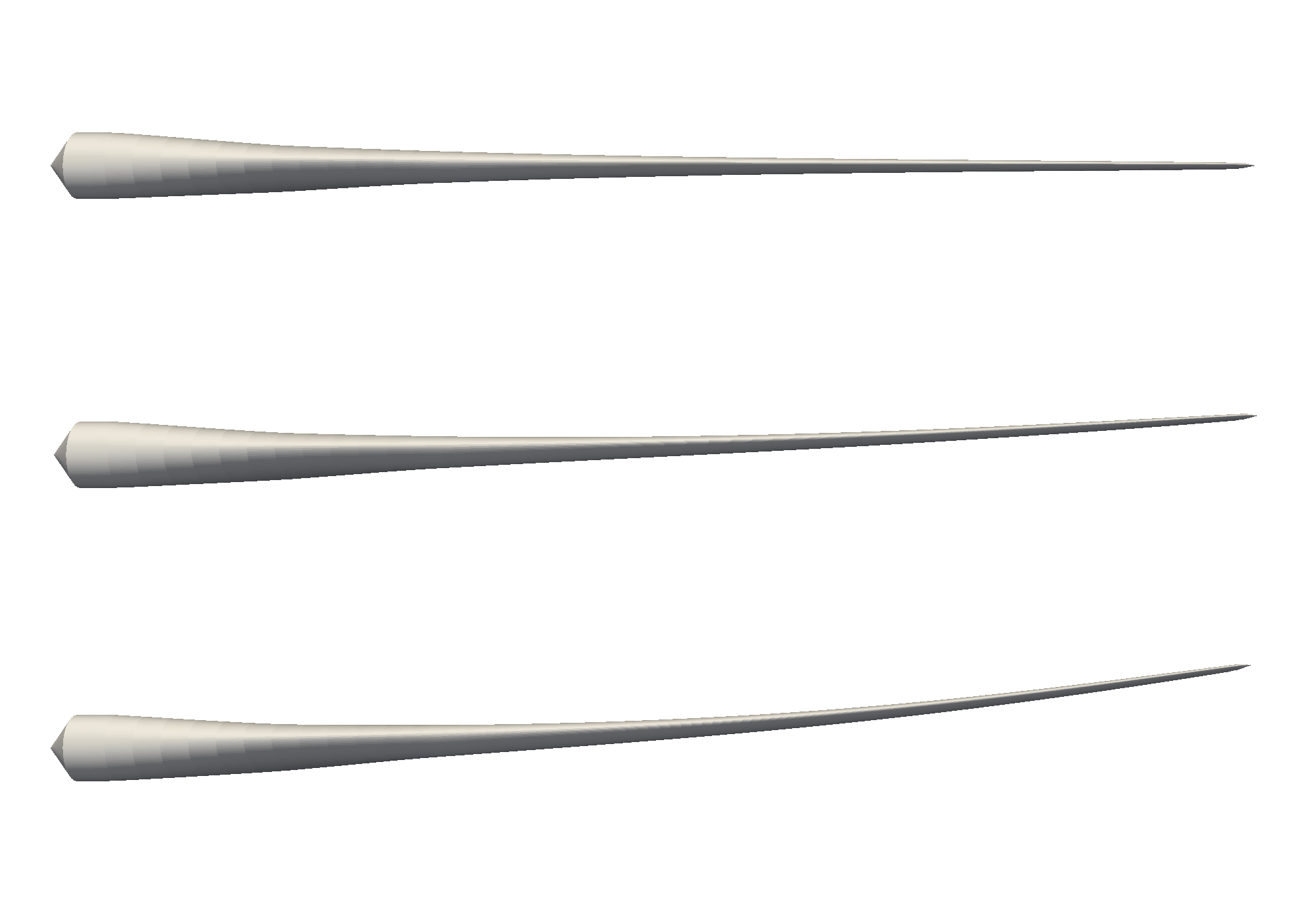Section: New Results
Hybrid POD/DNS: application to aeroelastic windturbine blade
Some new techniques related to Reduced Order Modelling have been developed in the framework of the EU project AEROGUST. The first proposed approach is based on a domain decomposition method in which a POD [56], [43], [44], [37], [36] model is dynamically coupled with a CFD solver [39], [38]. This tool can be used to perform predictive simulations thanks to the fact that the non-linear effects related to new working conditions are directly captured by the CFD solver while the far field region can be efficiently described by the POD model. The hybrid technique has been extended to gust simulations by the introduction of forcing terms which can describe perturbations coming from the far field.
The domain decomposition approach has been proposed also inside an iterative procedure named "numerical zoom" which is based on the use of several mesh levels. This procedure is repeated several times in order to focus the degrees of freedom of the discretisation in the region close to the body.
Finally, the POD method has been proposed also for the acceleration of CFD solver for incompressible flows. The solution of the Poisson problem on the pressure variable which appears in incompressible solvers can be quite time consuming. The proposed approach consists in searching the solution of the Poisson problem in the space spanned by the POD basis. This is done by substituting the POD expansion in the Poisson equation and minimizing the residuals. The robustness of the method has been improved by introducing a check on the quality of the Poisson solution (based on the divergence of the velocity field at the end of the correction step) and a dynamic update of the POD basis.
The domain decomposition approach with the forcing terms has been used to simulate the effects of a gust on a wind turbine blade in a simplified configuration at low Reynolds number. The numerical zoom procedure is applied by coupling a DNS simulation with a POD description of the far field. The solution obtained on three levels of mesh is reported in Figure 9 in which the vortex structures are shown according to the q-criterion. The bending of the blade is described by a non-linear beam model. Figure 10 shows the shapes of the blade without loads, in the chosen working condition and during the gust.




